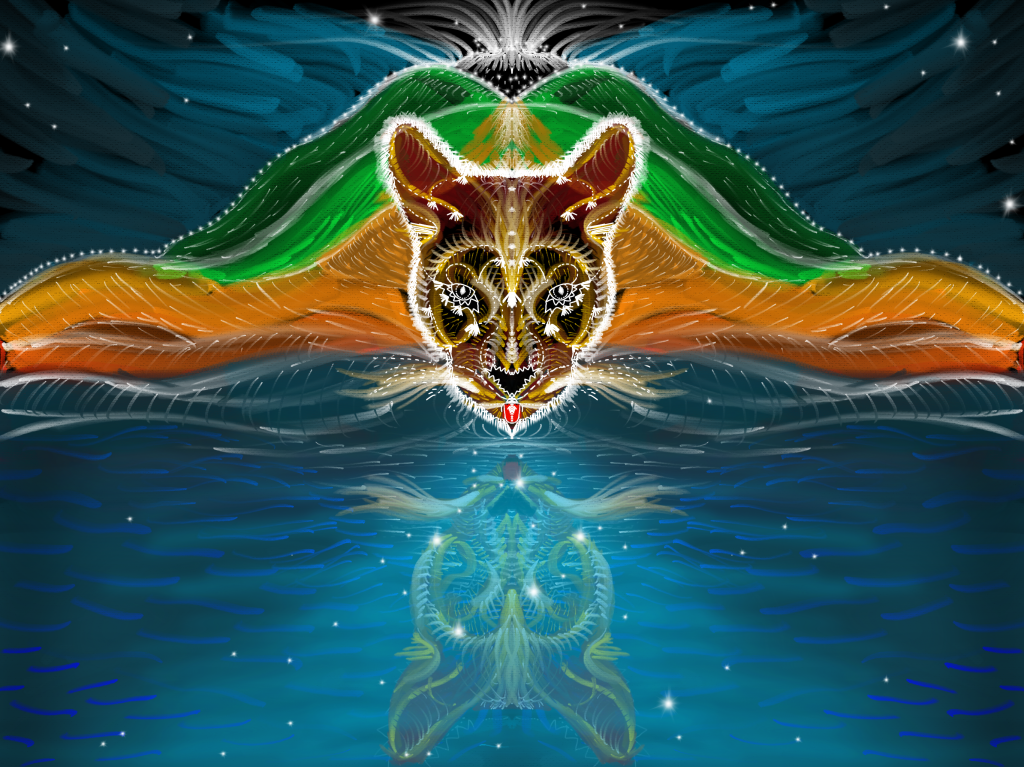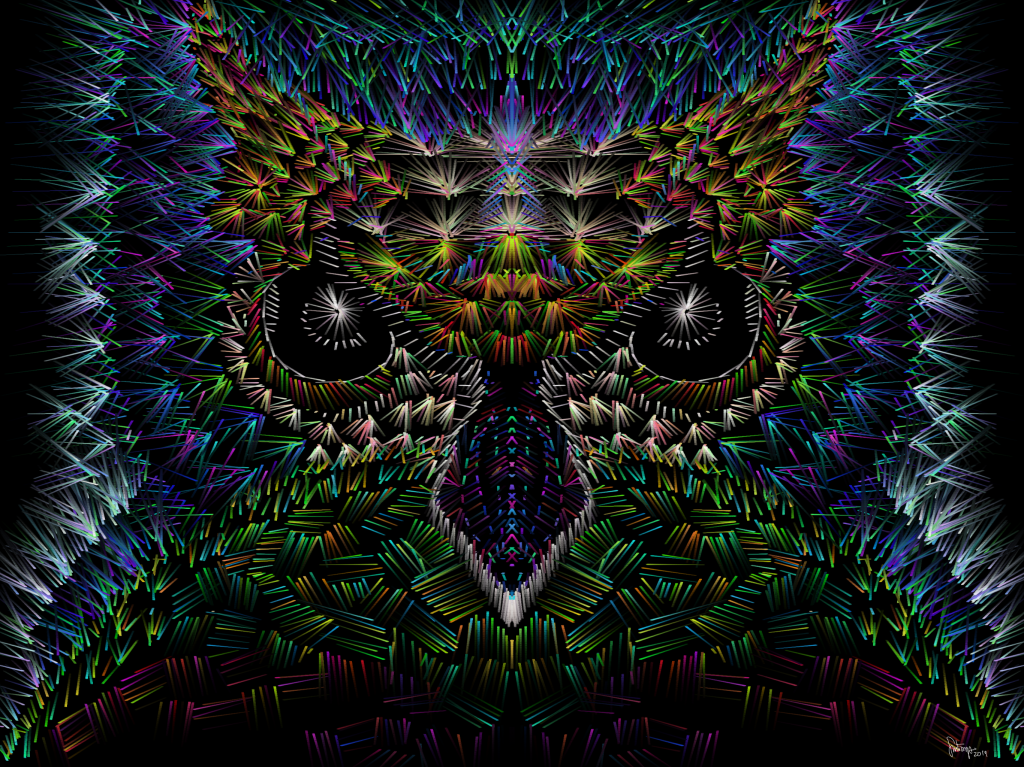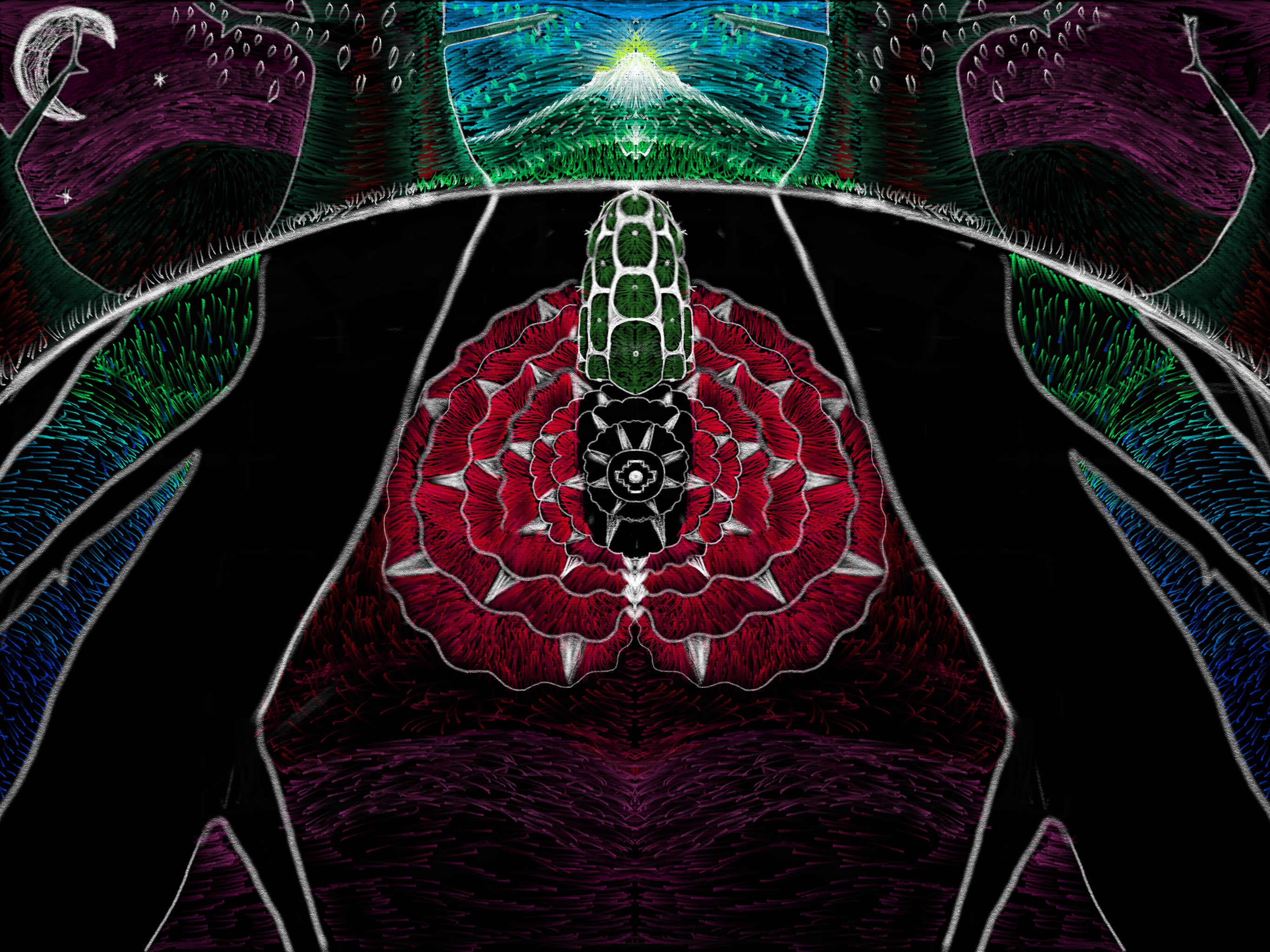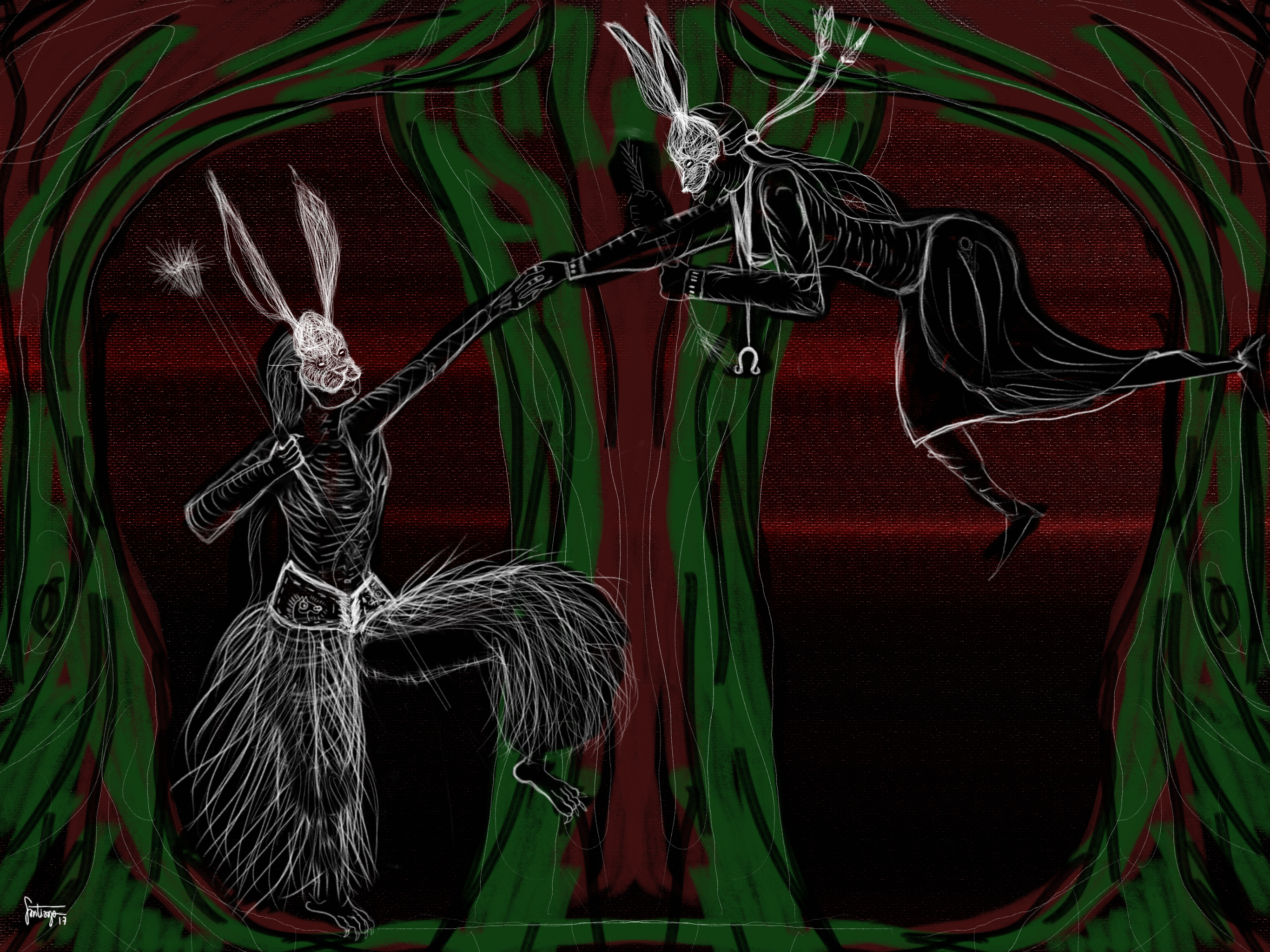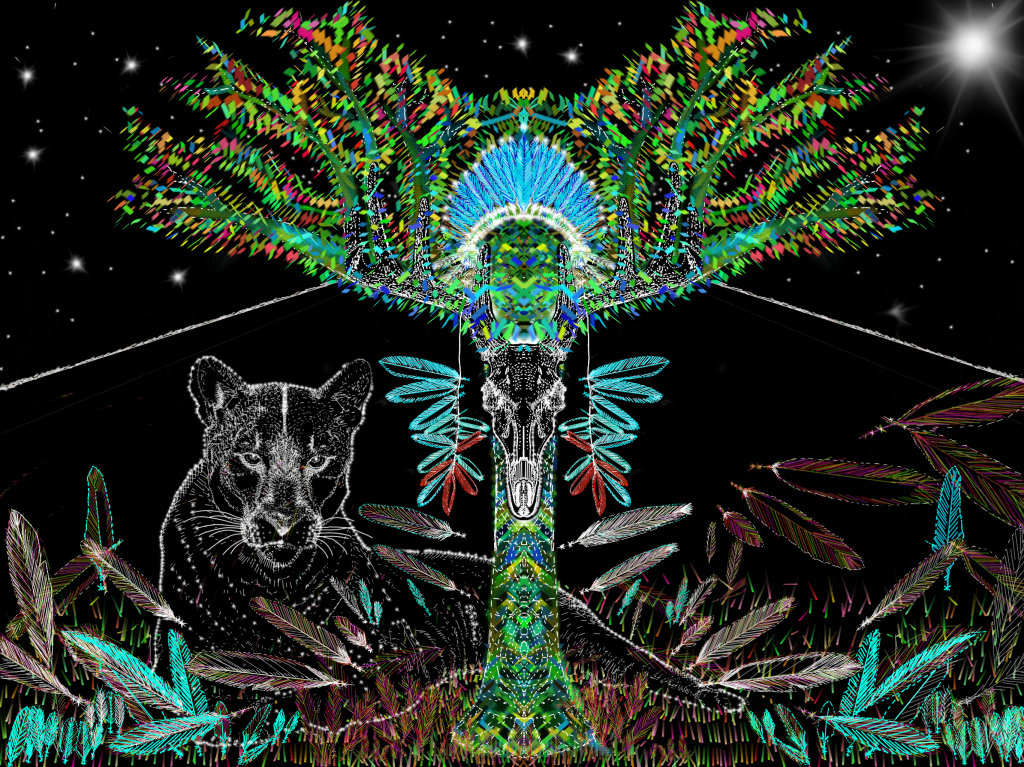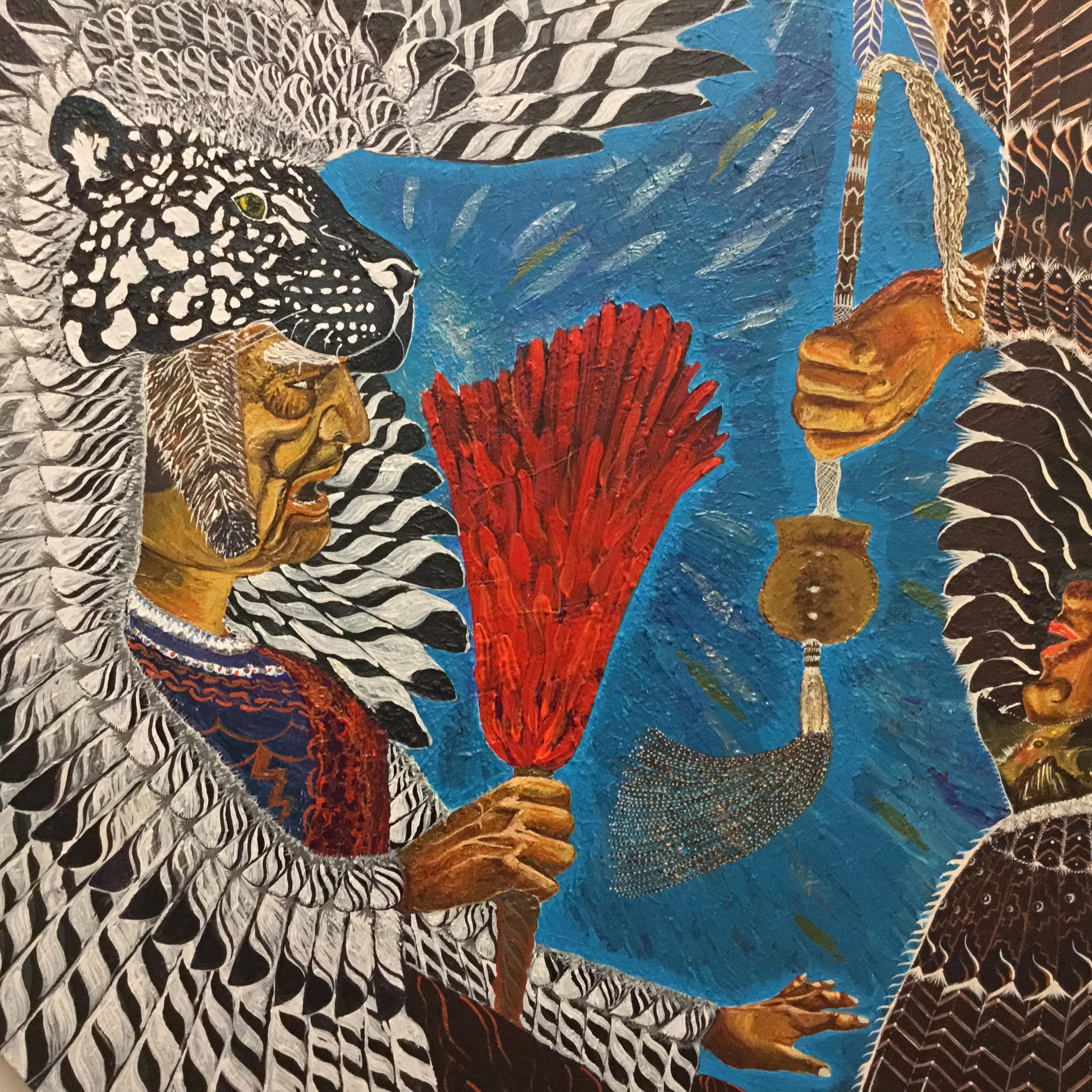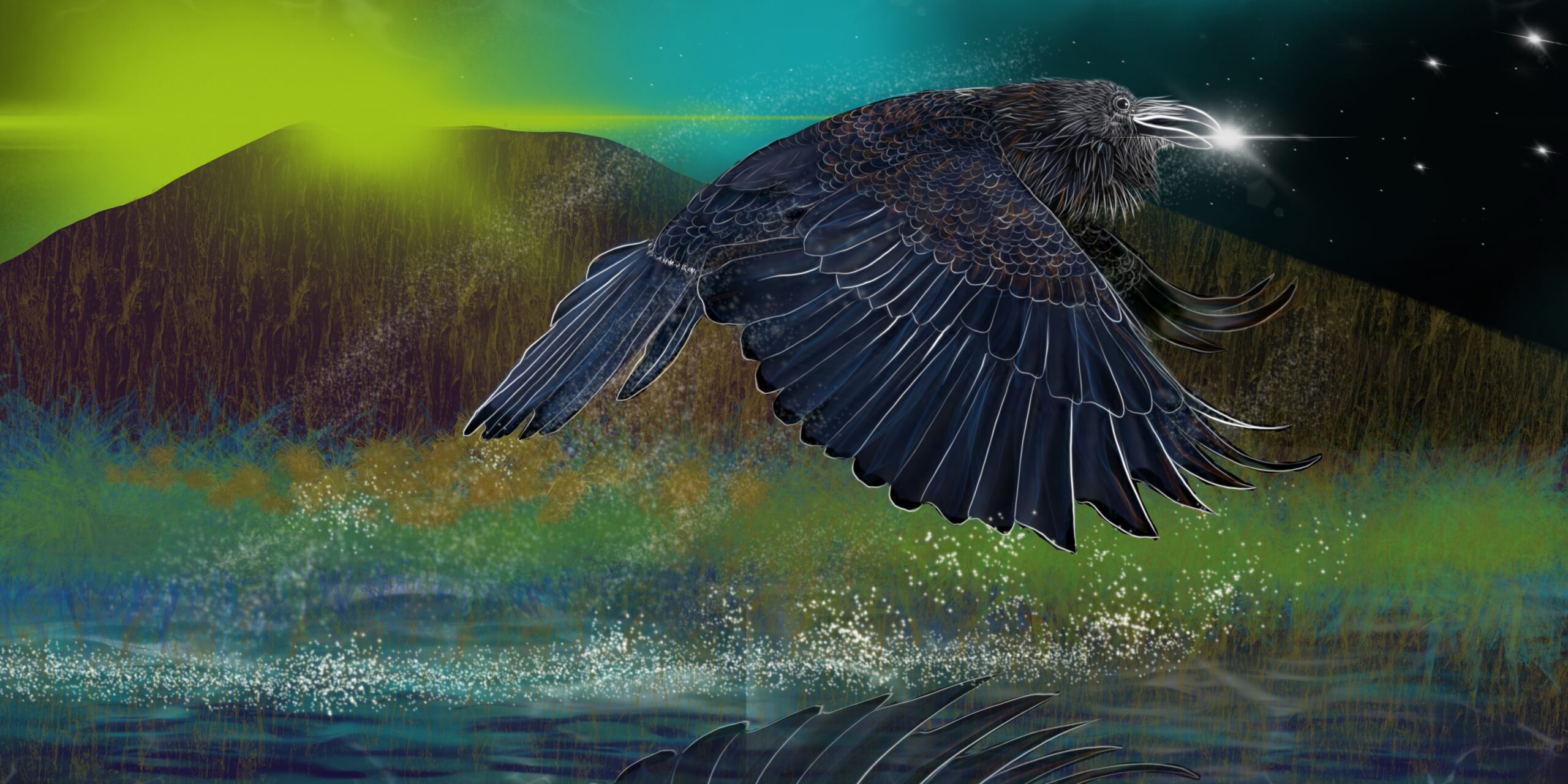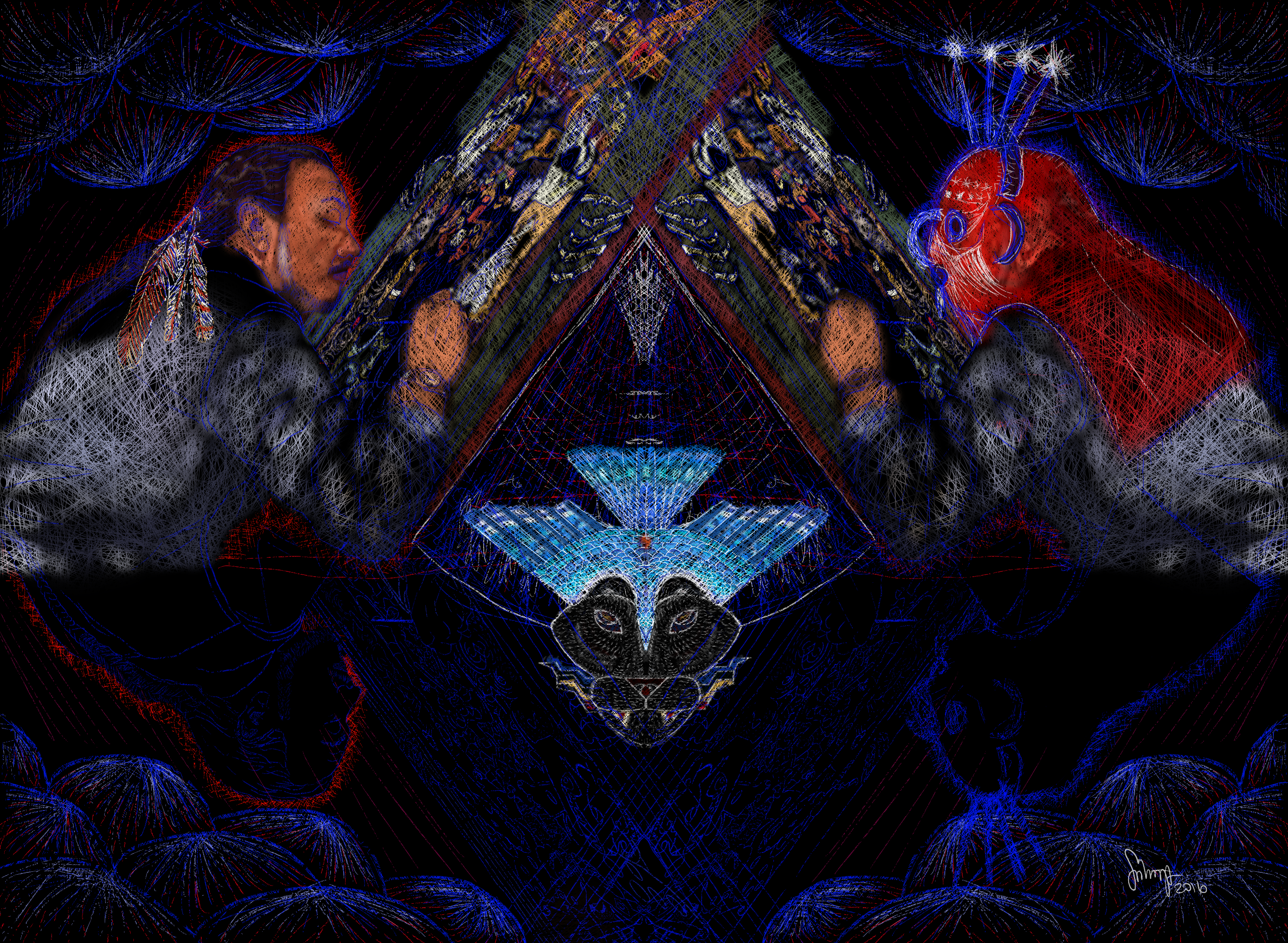Español 👇
A Ceremonial Offering in English
The sun rises over the Andes, and in its golden silence, something ancient stirs:
a memory, a song, a path.
Today we share with you the first chapters of The Path of Sumak Kawsay — a ceremonial book that is not just meant to be read, but walked. This is a journey for those who want to remember what it means to live in harmony: with oneself, with others, with the Earth, and with the invisible breath of spirit.
You will find teachings on purpose (Jatun Muskuy), on life as medicine (Jambi Kawsay), on Pachamama as teacher, and on knowledge as relation. These are not abstract ideas, but living truths whispered by the ancestors and guarded in ritual by the pueblos originarios of the Andes.
«Four foundations.
Four paths crossing in the heart.
They are not taught, they are walked.
They are not possessed, they are honored.»
This book is a bridge — between languages, between times, between souls.
We invite you to walk with us.
The Path of Sumak Kawsay
A Ceremonial Journey to the Heart of a Full Life
Prologue
The sun rises over the Andes, and in its golden light, the silhouette of a puma takes shape. It walks in silence, its gaze piercing the mist, and in its eyes burns the mystery of the sacred. It is the guardian of time, the bridge between the world of dreams and waking life. It watches us, waiting for us to remember.
The grandmothers tell us that before time was woven with the threads of memory, the Earth was only a dream resting in the chest of the Great Celestial Serpent. All was a possibility. All was a song yet unsung. Then, the Ancient Voice spoke in the language of thunder, and the rivers awakened, the trees rose with open arms, and fire learned to dance upon stone. Thus the world was born—not as an accident, nor a battleground, but as a sacred circle where every leaf, every bird, every spirit had a purpose and a song to sing.
This book is a call to awaken, to remember the path of balance, to recognize ourselves as threads in the great weave of life. In an age of disconnection—where noise drowns out the rivers’ song and haste steals the soul—Sumak Kawsay invites us to pause, to listen, to come home.
Buen Vivir is not a destination, but a way of walking. It is not a static philosophy, but an art of living in harmony with all that is. It teaches us that fullness does not arise from having, but from being; that true wealth lies not in accumulation, but in reciprocity; that real medicine is not found outside, but in the sacred dance between soul and nature. That original harmony is what we call Sumak Kawsay—Living Well. It is not just an idea, nor a distant concept, but a profound truth pulsing at the heart of existence. It is the wind whispering the secrets of time, the jaguar prowling in the shadows of the forest, the river that never ceases to flow.
We have lost our way. Like forgetful children of Pachamama, we have stumbled into the shadow of our own desire, mistaking gold for light, accumulation for abundance. In the cities of noise and stone, we have stopped listening to the voice of the mountains, to the counsel of the ancestors. But the Earth still speaks. In the rustling of leaves, in the dance of fire, in the eagle’s cry and the puma’s growl, she reminds us we are not alone—we are part of a sacred web that connects all that breathes, all that dreams.
The puma whispers in our ear: “Remember your purpose.” There is no greater loss than a life lived without meaning, no deeper sorrow than confusing expectation with the heart’s true calling. This book is a map for those seeking answers in the echo of the hills, in the whisper of the wind, in the wisdom of the Earth. It is a bridge—between times and cultures, between ancestral memory and the present, between knowing and living.
This book is a bridge. A path back to the spiritual home we should never have left. Within it, you will find the four pillars that uphold Sumak Kawsay: the search for purpose, the recognition of life as medicine, the wisdom of nature, and the awareness that we are all children of the Earth. Each one is a threshold, a teaching to help restore the lost harmony.
But this knowledge is not ours alone. Across this continent, Indigenous peoples have safeguarded the memory of the Great Spirit, weaving it into stories and ceremonies. The White Buffalo Calf Woman appeared to the Lakota to remind them of the path of the heart and the sacred responsibility of honoring life. In Mesoamerica, sages spoke of Nemenistli, the balance of existence, and left us the Four Agreements as guides for walking with integrity.
Today, the Andean Church of Buen Vivir rises as a new fire, kindled from the flame of the ancients. It is not a church of walls and doctrine, but of open sky and fertile ground; of drums that beat to the rhythm of the cosmos, and hearts awakening to the memory of the sacred. The Andean Church of Buen Vivir is a space to embody these principles, to restore the sacred bond between humanity and the cosmos. It is not an institution of dogma, but a fire lit in the hearts of those who choose to walk in balance.
May this book be a seed in your spirit. May every word spark the ember of a forgotten memory. And may you, upon finishing, no longer be the same—but a conscious traveler, a guardian of balance, a weaver of worlds.
The jaguar still roars deep in the forest. The wind still sings its ancient song. It is time to listen.
If this call resonates in your soul, follow the path. The Earth is waiting.
Welcome to the path of Buen Vivir.
The Original Heartbeat of Sumak Kawsay
Threshold of the Wind: A Call to Remember
“We do not come to learn something new, but to remember what the Earth already whispers in our bones. Before the word, before iron, there already existed the art of living well. Not in solitude, but in a sacred web: with water, with the mountains, with spirits and with dreams. That is what we call Sumak Kawsay.”
We begin this journey not as builders of something new, but as seekers uncovering an ancient fire, still glowing beneath the ash. Sumak Kawsay is a path walked with feet grounded on Earth and heart lifted to the sky. Its wisdom is not academic—it is lived. And its pillars are not ideas, but living forces.
The Origin in the Mist
Ancestral Roots of Sumak Kawsay
Sumak Kawsay was not born in constitutions or international forums. Its roots lie far beyond written time—within the deep memory of Indigenous peoples, in rituals, in weavings, in the stories shared around the fire.
It was lived before it was named. It emerged from ayni, from ranti ranti (exchange), from suma qamaña (good life, in Aymara), and from kawsay purina (walking through life) in the Andes.
The mountains, the wise grandfathers and grandmothers, are the true guardians of this knowledge.
Today, we remember not to turn it into a slogan, but to inhabit it once more as a way of life.
The Language That Sings
The Deeper Meaning of Sumak Kawsay
• Sumak: the beautiful, the harmonious, the whole. A beauty not of appearance, but of resonance with the whole.
• Kawsay: life that breathes, life that flows. Not mere existence, but sacred life, woven into the cycles of the cosmos.
Sumak Kawsay is, then, to live in full beauty—not in isolation, but within a web of connection, reciprocity, and meaning. It is not wellbeing (bienestar); it is being-well (bien-ser). It is not progress; it is harmony.
Fullness as a Way of Walking
To live fully is not to accumulate pleasures, but to recognize the sacred place of every being. Fullness is the balance between giving and receiving, between dreaming and doing, between knowing and caring. It is walking with purpose, without forgetting the song of the birds or the needs of our neighbor.
A full life is not measured, it is felt. And it is built day by day, with humility, with joy, and with gratitude.
The Major Foundations of Sumak Kawsay
Here we name the four major foundations, not yet to explain them, but so the reader may feel their presence as living gateways into a life of balance.
Each one represents an essential dimension of Buen Vivir, and together they form a cosmic cross, an inner chakana that orients the path.
Sumak Kamaña – Jatun Muskuy
To Live Together in Harmony and Dream with Purpose
This foundation brings together the wisdom of communal living (Sumak Kamaña) and the power of the Great Collective Dream (Jatun Muskuy).
We cannot live together without vision. We cannot dream without connection. Here, individual purpose becomes intertwined with the horizon of the people.
It is a call to dream with others, not against them.
Jambi Kawsay
Life as Medicine, Existence That Heals
Here, life is not a burden but a continuous process of healing.
Healing the body, yes—but also healing the word, the memory, the land, the community.
Every act, every meal, every relationship can become either medicine or poison.
This foundation reminds us that to live is to heal.
Tukuy Pachamama
All of Mother Earth as Teacher, as Temple
Here, it is understood that we do not live on the Earth, but within her.
Pachamama is not just nature—she is a sacred being, a cosmic body, a living mother.
To care for her is not a choice, but a destiny—a relationship of reciprocity, a foundational principle of existence.
Tukuy Yachay
All Knowledge, All Awareness in Interrelation
To know is not to collect data, but to understand the dance of the Whole.
This foundation honors ancestral knowledge, as well as embodied, intuitive, and symbolic ways of knowing.
True knowing does not divide—it unites, reveals, and awakens.
“Four foundations.
Four paths crossing in the heart.
They are not taught, they are walked.
They are not possessed, they are honored.
In time, each one will open like a flower to the sun.”
Chapter 1
Sumak Kamaña and
Jatun Muskuy
The Purpose in All That Exists
The elders say that nothing is born without reason, that every falling leaf has its destiny, and that the flight of the hummingbird is a message written by the wind. Everything that exists in this world—from the farthest star to the humblest seed—holds a purpose, a reason for being that pulses from within, like a sacred drumbeat.
Sumak Kamaña, the art of Buen Vivir, is not a distant goal nor an abstract idea. It is the deep understanding that life is not a coincidence, but a cosmic dance in which each being has its place in the harmony of the Whole. At the heart of this principle lies Jatun Muskuy—the Great Dream, the vision that guides us, the mission given to us even before birth.
1.1 The Great Weaving: Every Thread Has Its Place
The ancients knew that existence is like a loom. Each of us is a thread, woven into a design we may not always understand, yet perfect in its complexity. A thread that believes itself separate—that forgets its connection to the whole—is a lost thread, condemned to fragility and uprootedness.
Our life gains meaning when we find our place within the sacred weaving. Why have we come? What gift do we carry in our hearts? How can we offer it to the world? These questions mark the threshold of Sumak Kamaña, and each of us must find our own answers—not in books or doctrines, but in intimate conversation with nature, with the ancestors, and with our own spirit.
1.2 Individual Purpose and Collective Purpose
In Andean thought, there is no such thing as an individual purpose separate from the collective. Each being carries a mission—but that mission only finds its true meaning in relation to the community, to Pachamama, to Life in its entirety.
The condor does not fly for itself, but to read the messages of the sky and bring them to the Earth. The river does not flow at random, but because its movement gives life to everything it touches. In the same way, each of us has received a gift—an inner fire meant to ignite something greater than ourselves.
It is not enough to have a purpose; our purpose must fit within the purposes of others, must contribute to the Great Weaving, must nourish life—not just our ambition. A solitary purpose, disconnected from the community, becomes a burden, a constant struggle against the current. But when our gifts find their place in the greater fabric, life flows with more lightness, with more depth.
1.3 Purposes and Expectations: Two Paths, Two Destinies
The reason so many people suffer is not a lack of purpose, but the confusion between purpose and expectation.
Purpose is the inner fire that moves us, the compass that guides without promising anything. Expectation, on the other hand, is a mental image of how we think things should be. A person with purpose walks with certainty, even when the path is uncertain. A person led by expectations walks with anxiety, because the future never unfolds exactly as imagined.
Expectations bring frustration. They make us believe that life owes us something—that if we give, we must receive in equal measure, and exactly when we expect it. But life doesn’t work that way. Nature doesn’t rush, doesn’t bargain, doesn’t fulfill whims. A tree bears fruit when it is time, not when someone demands it.
If we walked with purpose instead of expectation, life would feel both deeper and lighter. We would no longer feel frustration when things don’t go our way, because we would understand that everything follows its own rhythm, its own reason. We would not live in the desperation of “What will I receive?”, but in the quiet certainty of “What am I offering?”
1.4 Signs Along the Path – How to Remember Our Purpose
Sometimes, we forget. Modern life immerses us in noise, in haste, in meaningless accumulation—and the song of our mission fades into a distant echo. But the Great Spirit never stops speaking to us. There are always signs, always callings, always paths that open when we are ready to see them.
Some ways to remember our purpose include:
• Silence and contemplation: Nature speaks in a subtle language. The wind in the mountains, the song of water, the flight of a bird—all can carry answers for those who know how to listen.
• Dreams and visions: In Andean traditions, dreams are not mere illusions of the mind, but messages from Spirit—signs of the path.
• Vision quest: Withdrawing into the solitude of the mountain, fasting and praying for days, is a way to seek clarity of purpose through humility and surrender. In this ancestral practice, the quester offers themselves to sky and earth, so that vision may come when the ego falls silent.
• Trials and challenges: Sometimes, what hurts us most teaches us most. Obstacles are not punishments, but wake-up calls inviting us to remember who we are.
• Deep joy: That which fills the soul, that which makes the heart sing, is often tied to our mission. What we do with love and without effort reflects the gift we came to offer the world.
1.5 The Puma and the Great Dream
The puma walks the mountain without fear or doubt. Its steps are sure because it expects nothing—it simply follows its instinct. It does not ask whether the stone beneath its paw will hold, or whether the wind will be favorable. It simply moves forward, trusting in the strength that lives in its legs and the wisdom of the Earth.
We, on the other hand, often doubt. We ask ourselves whether we are on the right path, whether what we do has meaning. But purpose is not something given to us from the outside. It is something we discover as we walk. Like the puma, we must learn to trust our instinct, our inner voice, and the signs the world offers us with every step.
Walking with Awareness
Sumak Kamaña calls us to walk with awareness—to live with intention, to remember that every action, every word, every thought weaves the fabric of our reality.
If you are reading these words, it is no coincidence. Perhaps the wind has brought you here to remind you of something your soul already knew. Perhaps it is time to look within and ask yourself:
What is my purpose? Why did I come to this Earth? How can I offer my gift to the world?
Listen carefully. The Earth, the wind, the puma, and the moon already know your answer. You only need to remember it.
And when you do, may your life become a prayer, a sacred song, a fire that lights the path for those who come after.
👉 You can buy the full book here:
https://www.lulu.com/es/search?contributor=Santiago+Andrade+Le%C3%B3n&adult_audience_rating=00&sortBy=PUBLICATION_DATE_DESC
Versión en español
El Camino del Sumak Kawsay
Una ofrenda ceremonial
El sol se alza sobre los Andes, y en su silencio dorado algo antiguo despierta:
una memoria, un canto, un sendero.
Hoy compartimos contigo los primeros capítulos de The Path of Sumak Kawsay, un libro ceremonial que no está hecho solo para ser leído, sino para ser vivido.
Este es un camino para quienes desean recordar qué significa vivir en armonía: con uno mismo, con los demás, con la Tierra y con el soplo invisible del espíritu.
Aquí encontrarás enseñanzas sobre el propósito (Jatun Muskuy), la vida como medicina (Jambi Kawsay), la Pachamama como maestra, y el conocimiento como relación.
No son ideas abstractas, sino verdades vivas, susurradas por los abuelos y resguardadas en ritual por los pueblos originarios de los Andes.
«Cuatro fundamentos.
Cuatro caminos que se cruzan en el corazón.
No se enseñan: se caminan.
No se poseen: se honran.»
Este libro es un puente — entre lenguas, entre tiempos, entre almas.
Te invitamos a caminar con nosotros.
El Camino del
Sumak Kawsay
Un viaje ceremonial haciael corazón de la vida plena
Prólogo
El sol se alza sobre los Andes, y en su luz dorada se dibuja la silueta de un puma. Su andar es silencioso, su mirada penetra la niebla, y en sus ojos arde el misterio de lo sagrado. Es el guardián del tiempo, el puente entre el mundo de los sueños y la vigilia. Nos observa, esperando a que recordemos.
Cuentan las abuelas que, antes de que el tiempo se tejiera con los hilos de la memoria, la Tierra era solo un sueño flotando en el pecho de la Gran Serpiente Celestial. Todo era posibilidad, todo era un canto aún no entonado. Entonces, la Voz Antigua habló en la lengua del trueno y los ríos despertaron, los árboles se alzaron con los brazos abiertos y el fuego aprendió a danzar sobre la piedra. Así nació el mundo, no como un accidente ni como un campo de batalla, sino como un círculo sagrado donde cada hoja, cada ave, cada espíritu tenía un propósito y una canción que cantar.
Este libro es un llamado a despertar, a recordar el camino del equilibrio, a reconocer que somos hilos en el gran tejido de la vida. En una era de desconexión, donde el ruido ahoga el canto de los ríos y la prisa nos roba el alma, el Sumak Kawsay nos invita a detenernos, a escuchar, a regresar a casa.
El Buen Vivir no es un destino, sino una forma de caminar. No es una filosofía estática, sino un arte de vivir en armonía con todo lo que existe. Nos enseña que la plenitud no nace del tener, sino del ser; que la riqueza no está en la acumulación, sino en la reciprocidad; que la verdadera medicina no se encuentra en el exterior, sino en la danza sagrada entre el alma y la naturaleza. Esa armonía primera es lo que llamamos Sumak Kawsay, el Buen Vivir. No es solo una idea, ni un concepto lejano, sino la verdad profunda que late en el corazón de la existencia misma. Es el viento que susurra los secretos del tiempo, el jaguar que acecha entre las sombras de la selva, el río que nunca deja de fluir.
Nos hemos extraviado. Como hijos olvidadizos de la Pachamama, hemos tropezado con la sombra de nuestro propio deseo, confundiendo el oro con la luz y la acumulación con la abundancia. En las ciudades de ruido y piedra, hemos dejado de escuchar la voz de las montañas y el consejo de los ancestros. Pero la Tierra sigue hablándonos. En el rumor de las hojas, en la danza del fuego, en el llamado del águila y el rugido del puma, nos recuerda que no estamos solos, que somos parte de un tejido sagrado que nos une a todo lo que respira, a todo lo que sueña.
El puma nos susurra al oído: «Recuerda tu propósito.» No hay mayor extravío que vivir sin sentido, ni mayor desdicha que confundir las expectativas con el verdadero llamado del corazón. Este libro es un mapa para quienes buscan respuestas en el eco de los cerros, en el susurro del viento, en la sabiduría de la tierra. Es un puente entre tiempos y culturas, entre la memoria ancestral y el presente, entre el saber y el vivir.
Este libro es un puente. Un camino de regreso al hogar espiritual del que nunca debimos alejarnos. Aquí encontrarás los cuatro pilares que sostienen el Sumak Kawsay: la búsqueda del propósito, el reconocimiento de la vida como medicina, la sabiduría de la naturaleza y la conciencia de que todos somos hijos de la Tierra. Cada uno es una puerta, una enseñanza que nos devuelve a la armonía perdida.
Pero este conocimiento no nos pertenece solo a nosotros. En cada rincón de este continente, los pueblos originarios han custodiado la memoria del Gran Espíritu, tejiéndola en sus relatos y rituales. La Mujer Búfalo Blanco se apareció a los pueblos Lakota para recordarles el sendero del corazón y la responsabilidad sagrada de honrar la vida. En Mesoamérica, los sabios hablaban del Nemenistli, el equilibrio de la existencia, y nos dejaron los Cuatro Acuerdos como guías para caminar con integridad.
Hoy, la Iglesia Andina del Buen Vivir nace como un fuego nuevo encendido con la llama de los antiguos. No es una iglesia de muros y doctrinas, sino de cielo abierto y suelo fértil; de tambores que laten al ritmo del cosmos y corazones que despiertan a la memoria de lo sagrado. La Iglesia Andina del Buen Vivir surge como un espacio para encarnar estos principios, para reconstruir la relación sagrada entre el ser humano y el cosmos. No es una institución de dogmas, sino un fuego encendido en el corazón de quienes eligen caminar en equilibrio.
Que este libro sea una semilla en tu espíritu. Que cada palabra encienda en ti la chispa de un recuerdo olvidado. Y que, cuando termines de leer, no seas el mismo, sino un caminante consciente, un guardián del equilibrio, un tejedor de mundos.
El jaguar aún ruge en la profundidad de la selva. El viento sigue susurrando su antigua canción. Es hora de escuchar.
Si este llamado resuena en tu alma, sigue el sendero. La Tierra nos espera.
Bienvenido al sendero del Buen Vivir.
El Latido Original del
Sumak Kawsay
Umbral del Viento: Llamado al Recuerdo
“No venimos a aprender algo nuevo, sino a recordar lo que la tierra ya susurra en nuestros huesos.
Antes del verbo, antes del hierro, existía ya el arte de vivir bien.
No en soledad, sino en red sagrada: con el agua, con las montañas, con los espíritus y los sueños.
A eso llamamos Sumak Kawsay.”
Así iniciamos este viaje, no como quien construye algo nuevo, sino como quien desentierra un fuego antiguo, aún latente bajo la ceniza. El Sumak Kawsay es un camino que se recorre con los pies en la tierra y el corazón en el cielo. Su sabiduría no es académica, es vivencial. Y sus pilares no son ideas, sino fuerzas vivas.
El origen en la niebla: Raíces ancestrales del Sumak Kawsay
El Sumak Kawsay no nació en las constituciones ni en los foros internacionales. Su origen está más allá del tiempo escrito, en la memoria profunda de los pueblos originarios, en los rituales, los tejidos, las conversaciones alrededor del fuego.
Fue vivido antes de ser nombrado. Surgió del ayni, del ranti ranti (intercambio), del suma qamaña (vida buena en aymara) y del kawsay purina (caminar la vida) en los Andes. Las montañas, los abuelos y las abuelas sabias son los verdaderos guardianes de este conocimiento.
Hoy lo recordamos no para usarlo como consigna, sino para volver a habitarlo como camino.
El lenguaje que canta: Significado profundo de “Sumak Kawsay”
- Sumak: lo bello, lo armónico, lo pleno. Una belleza que no es apariencia, sino resonancia con el todo.
- Kawsay: vida que respira, vida que fluye. No simple existencia, sino vida sagrada, tejida con los ciclos del cosmos.
“Sumak Kawsay” entonces es vivir con belleza plena, no en soledad, sino en una red de vínculos, de reciprocidades y de sentido. No es bienestar, es bien-ser. No es progreso, es armonía.
La plenitud como modo de andar
Vivir plenamente no es acumular placeres, sino reconocer el lugar sagrado de cada ser. Plenitud es el equilibrio entre dar y recibir, entre soñar y actuar, entre conocer y cuidar. Es caminar con propósito, pero sin olvidar el canto de los pájaros ni la necesidad del vecino.
Una vida plena no se mide, se siente. Y se construye día a día, con humildad, alegría y gratitud.
Fundamentos Mayores del Sumak Kawsay
Aquí nombramos los cuatro fundamentos mayores, no para explicarlos aún, sino para que el lector sienta su presencia como puertas vivientes hacia una existencia en equilibrio.
Cada uno representa una dimensión esencial del Buen Vivir, y juntos forman una cruz cósmica, una chakana interior que orienta el camino.
Sumak Kamaña – Jatun Muskuy
Convivir en armonía y soñar con propósito.
Este fundamento reúne la sabiduría de vivir juntos (Sumak Kamaña) con el poder del gran sueño colectivo (Jatun Muskuy).
No se puede convivir sin visión. No se puede soñar sin vínculo. Aquí se entrelazan el propósito individual y el horizonte de los pueblos.
Es el llamado a soñar con los demás, y no contra ellos.
Jambi Kawsay
Vida como medicina, existencia que sana.
Aquí la vida no es una carga, sino un proceso de sanación constante.
Sanar el cuerpo, sí. Pero también sanar la palabra, la memoria, el territorio, la comunidad.
Todo acto, todo alimento, toda relación, puede ser medicina o puede ser veneno.
Este fundamento nos recuerda que vivir es sanar.
Tukuy Pachamama
Toda la Madre Tierra como maestra, como templo.
Aquí se reconoce que no vivimos sobre la Tierra, sino dentro de ella.
Pachamama no es solo naturaleza, es sujeto sagrado, cuerpo cósmico, madre viviente. Cuidarla no es opción: es destino, es reciprocidad, es principio de existencia.
Tukuy Yachay
Todo saber, toda conciencia en interrelación.
Saber no es acumular datos, sino comprender la danza del todo.
Este fundamento honra el conocimiento ancestral, pero también el conocimiento encarnado, intuitivo, simbólico. El saber verdadero no separa: une, revela, despierta.
“Cuatro fundamentos.
Cuatro caminos que se cruzan en el corazón.
No se los enseña, se los camina.
No se los posee, se los honra.
Más adelante, cada uno se abrirá como una flor al sol.”
Parte I:
Fundamentos del
Sumak Kawsay
Capítulo 1
Sumak Kamaña y Jatun Muskuy – El Propósito en Todo lo Existente
Dicen los abuelos que nada nace sin razón, que cada hoja que cae tiene un destino y que el vuelo del colibrí es un mensaje escrito por el viento. Todo lo que existe en este mundo —desde la estrella más lejana hasta la semilla más humilde— tiene un propósito, una razón de ser que pulsa en su interior como un tambor sagrado.
El Sumak Kamaña, el arte del Buen Vivir, no es una meta lejana ni una idea abstracta. Es la comprensión profunda de que la vida no es una casualidad, sino una danza cósmica donde cada ser ocupa su lugar en la armonía del Todo. En el centro de este principio se encuentra el Jatun Muskuy, el Gran Sueño, la visión que nos guía, la misión que nos fue dada antes incluso de nacer.
1.1. El Gran Tejido: Cada Hilo Tiene su Lugar
Los antiguos sabían que la existencia es como un telar. Cada uno de nosotros es un hilo entrelazado en un diseño que no siempre alcanzamos a comprender, pero que es perfecto en su complejidad. Un hilo que se cree separado, que olvida su conexión con el conjunto, es un hilo perdido, condenado a la fragilidad y al desarraigo.
Nuestra vida tiene sentido cuando encontramos nuestro lugar en el tejido sagrado. ¿Para qué hemos venido? ¿Qué don llevamos en nuestro corazón? ¿Cómo podemos ofrecerlo al mundo? Estas preguntas son la puerta de entrada al Sumak Kamaña, y cada uno de nosotros debe hallar sus propias respuestas, no en libros ni en doctrinas, sino en la conversación íntima con la naturaleza, con los ancestros, con nuestro propio espíritu.
1.2. El Propósito Individual y el Propósito Colectivo
En el pensamiento andino, no existe la idea de un propósito individual separado del colectivo. Cada ser tiene una misión, pero esta solo cobra verdadero sentido en su relación con la comunidad, con la Pachamama, con la Vida en su totalidad.
El cóndor no vuela para sí mismo, sino para leer los mensajes del cielo y traerlos a la tierra. El río no corre por capricho, sino porque su fluir da vida a todo lo que toca. Así también, cada uno de nosotros ha recibido un don, un fuego interno que debe encender algo más grande que nosotros mismos.
No basta con tener un propósito; es necesario que nuestro propósito encaje con los propósitos de los demás, que sume en el Gran Tejido, que nutra la vida y no solo nuestra ambición. Un propósito solitario, desconectado de la comunidad, se convierte en un peso, en una lucha constante contra la corriente. Pero cuando nuestros dones encuentran su lugar en la trama mayor, la vida fluye con más ligereza, con más profundidad.
1.3. Propósitos y Expectativas: Dos Caminos, Dos Destinos
La razón por la que tantas personas sufren no es la falta de propósito, sino la confusión entre propósito y expectativa.
El propósito es el fuego interno que nos impulsa, la brújula que nos guía sin prometer nada. La expectativa, en cambio, es una imagen que construimos en la mente sobre cómo deberían ser las cosas. Una persona con propósito camina con certeza, aunque el camino sea incierto. Una persona con expectativas camina con ansiedad, porque el futuro nunca se comporta exactamente como ella lo imaginó.
Las expectativas traen frustración. Nos hacen creer que la vida nos debe algo, que si damos, recibiremos en la misma medida y en el tiempo que esperamos. Pero la vida no funciona así. La naturaleza no se apresura, no negocia, no cumple caprichos. Un árbol da frutos cuando es su tiempo, no cuando alguien lo exige.
Si camináramos con propósito en lugar de expectativas, la vida sería más profunda y más liviana al mismo tiempo. No nos frustraríamos cuando algo no sale como queremos, porque comprenderíamos que todo tiene su ritmo y su razón. No viviríamos en la desesperación del «¿qué recibiré?», sino en la certeza del «¿qué estoy ofreciendo?».
1.4. Las Señales del Camino: Cómo Recordar el Propósito
A veces olvidamos. La vida moderna nos sumerge en el ruido, en las prisas, en la acumulación sin sentido, y el canto de nuestra misión se vuelve un eco lejano. Pero el Gran Espíritu nunca deja de hablarnos. Siempre hay señales, siempre hay llamados, siempre hay caminos que se abren cuando estamos listos para verlos.
Algunas formas de recordar nuestro propósito incluyen:
• El silencio y la contemplación: La naturaleza nos habla en su lenguaje sutil. El viento en las montañas, el canto del agua, el vuelo de un ave pueden contener respuestas para quien sabe escuchar.
• Los sueños y visiones: En las tradiciones andinas, los sueños no son meras ilusiones de la mente, sino mensajes del espíritu, indicaciones del camino.
• La búsqueda de visión: Retirarse a la soledad de la montaña, ayunando y orando por varios días, es una forma de buscar claridad de propósito mediante la humildad y la entrega. En esta práctica ancestral, el buscador se ofrece al cielo y a la tierra para que la visión llegue cuando el ego se silencie.
• Las pruebas y desafíos: A veces, lo que más nos duele es lo que más nos enseña. Los obstáculos no son castigos, sino llamados de atención que nos invitan a recordar quiénes somos.
• La alegría profunda: Lo que nos llena el alma, lo que hace que nuestro corazón cante, suele estar conectado con nuestra misión. Aquello que hacemos con amor y sin esfuerzo es un reflejo del don que traemos al mundo.
1.5. El Puma y el Gran Sueño
El puma camina en la montaña sin miedo ni dudas. Su andar es firme porque no espera nada, solo sigue su instinto. No se pregunta si la piedra que pisa lo sostendrá ni si el viento será favorable; él solo avanza, confiando en la fuerza que habita en sus patas y en la sabiduría de la tierra.
Nosotros, en cambio, muchas veces dudamos. Nos preguntamos si estamos en el camino correcto, si lo que hacemos tiene sentido. Pero el propósito no es algo que nos es dado desde afuera, sino algo que descubrimos al andar. Como el puma, debemos aprender a confiar en nuestro instinto, en nuestra voz interior, en las señales que el mundo nos ofrece a cada paso.
Caminar con Conciencia
El Sumak Kamaña nos llama a caminar con conciencia. A vivir con intención. A recordar que cada acción, cada palabra, cada pensamiento teje nuestra realidad.
Si estás leyendo estas palabras, no es casualidad. Tal vez el viento te ha traído hasta aquí para recordarte algo que tu alma ya sabía. Tal vez es hora de que mires dentro de ti y te preguntes:
¿Cuál es mi propósito? ¿Para qué vine a esta Tierra? ¿Cómo puedo ofrecer mi don al mundo?
Escucha con atención. La Tierra, el viento, el puma y la luna ya conocen tu respuesta. Solo falta que tú la recuerdes.
Y cuando la recuerdes, que tu vida se convierta en un rezo, en un canto sagrado, en un fuego que ilumina el camino de quienes vienen detrás.
👉 Puedes adquirir el libro completo aquí:
https://www.lulu.com/es/search?contributor=Santiago+Andrade+Le%C3%B3n&adult_audience_rating=00
